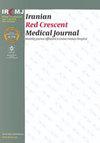重症监护病房创伤患者凝血功能障碍发生率及危险因素评价
IF 0.2
4区 医学
Q3 MEDICINE, GENERAL & INTERNAL
引用次数: 0
摘要
背景:创伤后凝血功能障碍是一个常见的问题。然而,与凝血功能障碍相关的危险因素尚不清楚。目的:回顾性分析创伤后入住重症监护病房(ICU)的患者发生创伤相关凝血功能障碍的频率、危险因素及其对预后的影响。方法:对2011 ~ 2017年收治的20张床位的混合型成人ICU收治的184例外伤患者进行分析。通过检查实验室结果,将患者分为两组:有凝血功能障碍的患者和没有凝血功能障碍的患者。病人有;凝血细胞计数16s,活化的部分凝血质体时间(aPTT) bbb400s,国际标准化比率(INR)>1.6被认为是凝血病。对患者病历进行回顾性记录。结果:184例纳入研究的患者平均年龄为41.77岁;其中19%是女性,81%是男性。78例患者(42.4%)出现凝血功能障碍(第1天32.6%,第3天9.8%)。发现发生凝血功能障碍的患者伴发疾病较多(p0.05)。伴随疾病、低GCS和白蛋白值被确定为凝血病发展的独立危险因素。结论:作为结论;由于GCS无法改变,且危险因素属于危重性创伤患者,我们认为通过适当的途径预防低白蛋白血症等危险因素,有可能降低凝血功能障碍的发生频率和死亡率。本文章由计算机程序翻译,如有差异,请以英文原文为准。
Evaluation of coagulopathy frequency and risk factors in trauma patients in intensive care unit
Background: Post traumatic coagulopathy is a frequently encountered problem. However, risk factors related to coagulopathy are not exactly known.
Objectives: In this study it is targeted to determine the frequency of coagulopathy related to trauma, risk factors and its affect to prognosis on patients admitted to Intensive Care Unit(ICU) after trauma retrospectively.
Methods: 184 patients admitted to mixed type adult ICU, which is having 20 beds, in the years between 2011 and 2017 due to trauma have been studied. Patients have been separated into two groups as patients having coagulopathy and not having coagulopathy by examining their laboratory results. Patients having; thrombocyte count <100 000/μL on the first and third days, Prothrombin Time(PT)>16s, activated Partial Thromboplastine Time(aPTT)>40s, International Normalized Ratio(INR)>1.6 are being accepted as having coagulopathy. Medical records of patients have been recorded retrospectively.
Results: The average age of 184 patients that are included in the study is 41.77; 19% of them are Female and 81% of them are Male. Coagulopathy detected on 78 patients (42.4%) (on the first day 32.6%, on the third day 9.8%). It has been detected that, patients developed coagulopathy were having more accompanying diseases(p<0.05), lower Glasgow Coma Score (GCS)(p<0.05), lower albumin values(p<0.05) and higher 28-day mortality rates(p<0.001) compared to patients that have not developed coagulopathy. Revised Trauma Score(RTS) of two groups are not significant(p>0.05). Having accompanying diseases, having low GCS and albumin values are being determined as independent risk factors in coagulopathy development.
Conclusion: As a conclusion; since it is not possible to change GCS and risk factors belong to critical trauma patients, we think that it is possible to decrease the frequency of coagulopathy development as well as mortality rate by preventing risk factors such as hypoalbuminemia by means of suitable approaches.
求助全文
通过发布文献求助,成功后即可免费获取论文全文。
去求助
来源期刊

Iranian Red Crescent Medical Journal
MEDICINE, GENERAL & INTERNAL-
CiteScore
1.16
自引率
0.00%
发文量
0
期刊介绍:
The IRANIAN RED CRESCENT MEDICAL JOURNAL is an international, English language, peer-reviewed journal dealing with general Medicine and Surgery, Disaster Medicine and Health Policy. It is an official Journal of the Iranian Hospital Dubai and is published monthly. The Iranian Red Crescent Medical Journal aims at publishing the high quality materials, both clinical and scientific, on all aspects of Medicine and Surgery
 求助内容:
求助内容: 应助结果提醒方式:
应助结果提醒方式:


